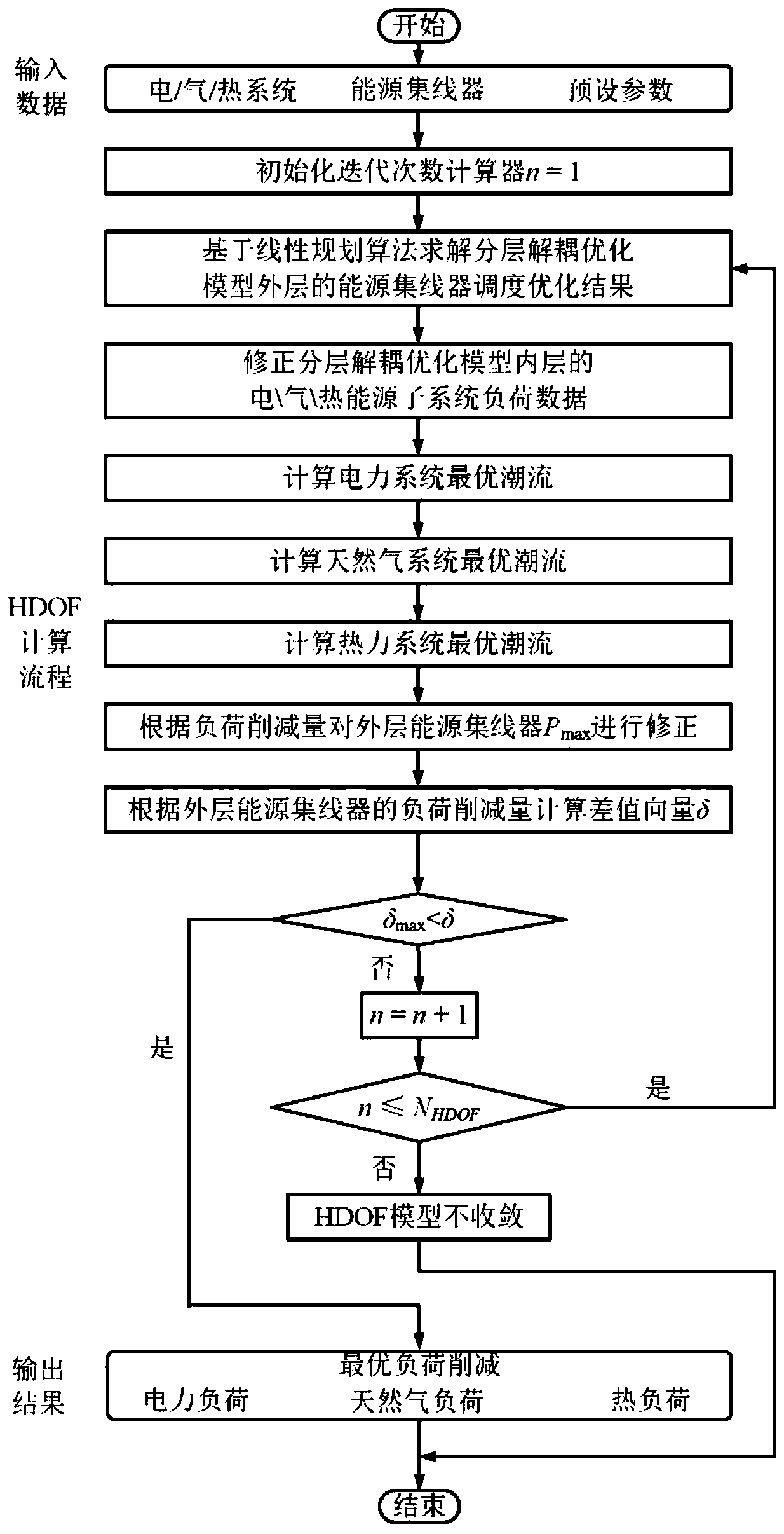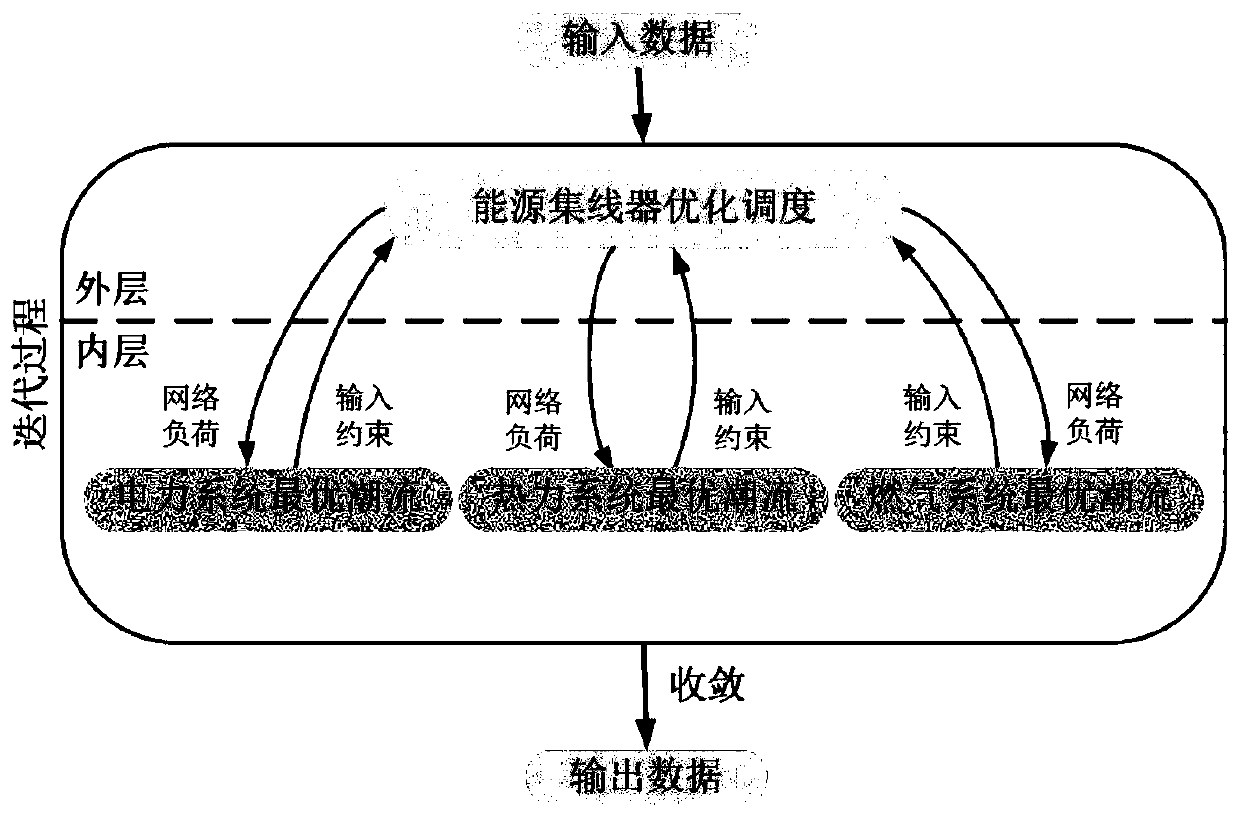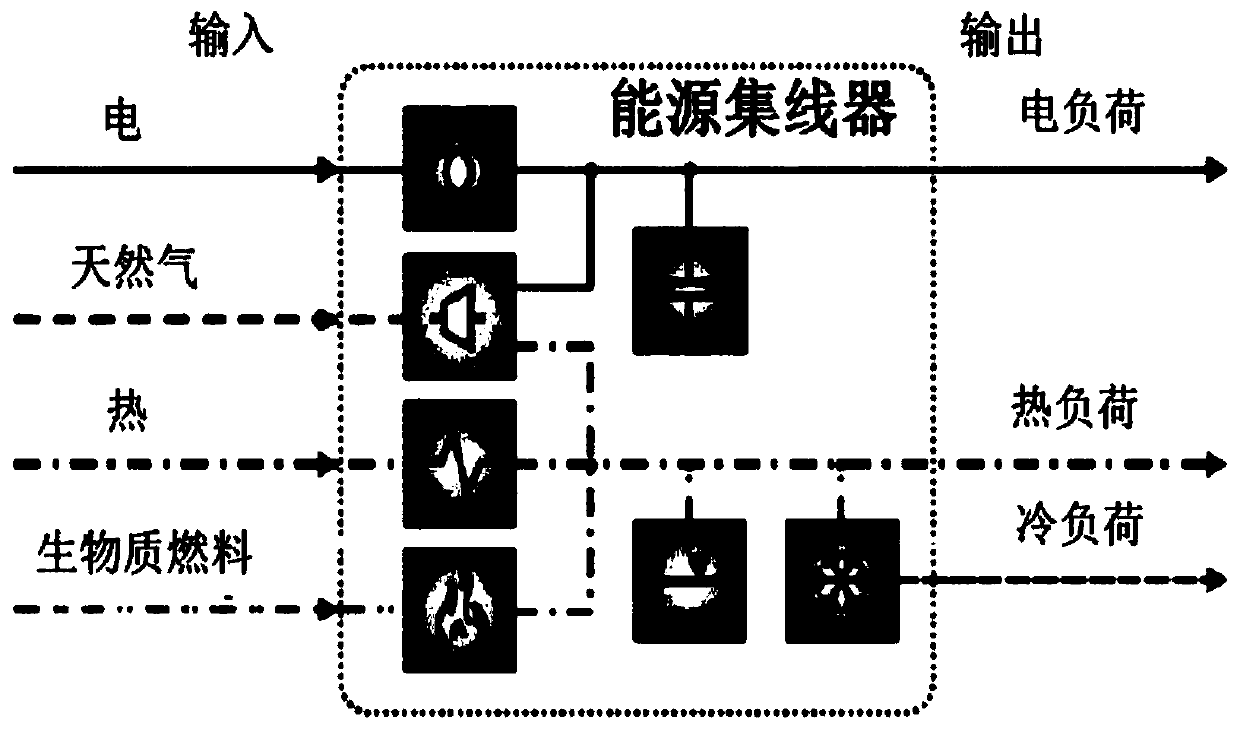Layered decoupling optimal load reduction method for electrical and thermal integrated energy system
A technology that integrates energy systems and optimal loads. It is applied in resources, design optimization/simulation, instruments, etc., and can solve problems such as difficult algorithm convergence, difficult calculation results to ensure global optimality, and Jacobian matrix singularity.
- Summary
- Abstract
- Description
- Claims
- Application Information
AI Technical Summary
Problems solved by technology
Method used
Image
Examples
Embodiment Construction
[0065] The calculation method for the optimal load reduction amount of the layered decoupled electric-thermal comprehensive energy system of the present invention is further described in detail below in conjunction with the embodiments and the accompanying drawings:
[0066] A layered decoupling calculation method for the optimal load reduction amount of the electric thermal comprehensive energy system, such as figure 1 As shown, the integrated energy system hierarchical decoupling optimization model (Hierarchical Decoupling Optimization Framework of IES, HDOF) established by the algorithm is as follows: figure 2 shown, including the following steps:
[0067] Step 1: Input comprehensive energy system data, including electric / gas / thermal systems and energy hubs, etc. Specific inputs include: transmission lines, natural gas pipelines, thermal pipelines, transformer and compressor parameters, load data, topology and structure type of energy hubs, transformers, air conditioners,...
PUM
 Login to View More
Login to View More Abstract
Description
Claims
Application Information
 Login to View More
Login to View More - R&D
- Intellectual Property
- Life Sciences
- Materials
- Tech Scout
- Unparalleled Data Quality
- Higher Quality Content
- 60% Fewer Hallucinations
Browse by: Latest US Patents, China's latest patents, Technical Efficacy Thesaurus, Application Domain, Technology Topic, Popular Technical Reports.
© 2025 PatSnap. All rights reserved.Legal|Privacy policy|Modern Slavery Act Transparency Statement|Sitemap|About US| Contact US: help@patsnap.com



